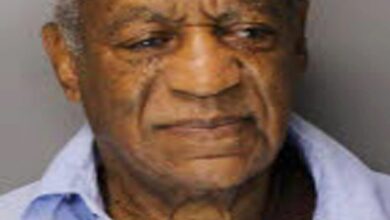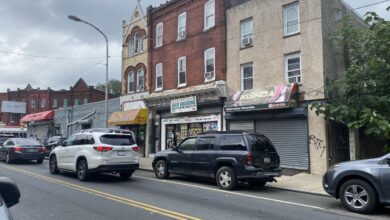Remarkable photos of Black America 100 years ago

The celebration of Black history in the U.S. has a long history itself. President Gerald Ford may be credited for officially recognizing the tradition in 1976, but a month-long celebration of Black American achievement goes back decades earlier. Black communities have held special events in February — the birth month of both Frederick Douglass and Abraham Lincoln — since the late 19th century.
1926 was a banner year, thanks to historian Carter G. Woodson’s declaration of a Black history week. The first collegiate institution to celebrate Black History Month is thought to be Kent State University, in 1970.
Here’s a look at what many facets of Black American life looked like roughly a century ago. This photo shows a woman wearing a pearl necklace and earrings, circa 1925. The image is from a collection of photo postcards from the period.
On the go
Here, a couple poses for a photograph behind the wheel of an automobile, in a photography studio, in front of a painted backdrop.
The year: 1925.
Young flappers
These four women are quintessence of 1920s flapper chic.
Hallmarks of the look included hair styled in soft waves, and dresses with dropped waists, kimono-style robes and sash-style fronts.
Emancipation Day parade
Locals participate in an Emancipation Day parade in Lincolnville, Florida.
The undated image was taken sometime in the 1920s.
Josephine Baker — and an ostrich
Here, the iconic singer and dancer Josephine Baker has harnessed an ostrich to pull a racing sulky.
The year is thought to be 1920.
Harlem parade
Seen in a pinstriped suit, former heavyweight boxing champ Jack Johnson rides in a Harlem parade. “Jack beamed upon the cheering crowd, rising now and then to acknowledge the greeting,” a reporter noted.
The date: July 22, 1921.
Colorful frame
This beautiful silver gelatin print frames a woman with a laurel of sweet peas.
It’s from around 1920.
Postcard photo
This full-length portrait shows a woman seated in a wooden chair and holding a telephone, circa 1920.
The photo comes a collection of picture postcards.
On patrol
Two policemen walk on patrol in Harlem in New York.
The year: 1929.
International sensation
This portrait of American-born singer and dancer Josephine Baker features the Parisian sensation lying on a tiger rug in a silk evening gown and diamond earrings.
The photo was taken circa 1925.
Sensational Josephine
Born Freda Josephine McDonald, Baker was more than just an entertainer. She was also a civil rights activist and a member of the French Resistance during World War II.
This photo was taken circa 1927.
A cook poses
A cook wearing an apron is seen outside the Eastville Cafe in the 1920s.
The cafe was located in Callaway County, Missouri.
Taking a break
A butcher takes a break, looking out from a shop in the Hill District, Pittsburgh.
The year: 1929.
Tulsa Race Massacre
This photo, dated June 3, 1921, shows injured men being taken to a hospital by the National Guard after an attack known as the Tulsa Race Massacre.
Mobs of white residents attacked Black neighbors and businesses, largely destroying the Greenwood District in Tulsa, Oklahoma.
A pioneer for children
Janie Porter Barrett helped establish the Virginia Industrial School for Colored Girls, a pioneering center for troubled children.
Here’s a portrait of her, circa 1922.
Fashionable and full-length
Silhouettes of the early 1920s often carried echoes of turn-of-the-century fashion, including nipped waists.
Here is a 1920 portrait of a woman standing in front of a white wall, reading a book. It’s from a collection of photo postcards.
Blues royalty
Blues singer Bessie Smith poses for a portrait circa 1924.
Smith was a huge figure in the American Jazz Age, earning the nickname “Empress of the Blues.”
Bessie Smith
Here, “Empress of the Blues” Bessie Smith poses for a portrait circa 1925 in Indianapolis, Indiana.
Many of her songs dealt with social issues and themes of sexual freedom for women.
On strike
Black and White miners are seen together in the coal fields of Pennsylvania.
The date is thought to be 1929.
Champion in training
Texas-born boxer Jack Johnson is seen here in training.
Known as the “Galveston Giant,” was the first Black world boxing heavyweight champion.
A champion and defenders
Boxing champion Jack Johnson, third from right, stands with a group of men outside the Chicago Defender newspaper offices on Indiana Avenue in Chicago. Defender founder and publisher Robert Abbott stands farthest to the right.
The year was 1926.
Jack Johnson
Jack Johnson picks up a log of wood.
The photo was taken in the early 1920s.
Renaissance man
Born Countee LeRoy Porter, poet Countee Cullen was a key figure in the Harlem Renaissance.
Musician Duke Ellington was an admirer.
Ida B. Wells
Ida B. Wells, an investigative journalist and civil rights activist, was noted for her documentation of lynchings in the United States, among other achievements.
This photo was taken around 1920.
NAACP co-founder
American writer and educator James Weldon Johnson poses circa 1925.
Johnson was one of the founders of the NAACP and served as the group’s secretary from 1916-1930.
Ma Rainey in Chicago
“Mother of the Blues” Ma Rainey poses with her band, the Rabbit Foot Minstrels.
The year: 1923.
Women at work
Women work at a doll factory that produced toys for children of color.
The factory was in Harlem; the photo was taken in 1929.
NAACP leaders
Members of the National Association for the Advancement of Colored People (NAACP) pose at the organization’s 20th annual session in Cleveland, Ohio, on June 26, 1929.
Pictured are NAACP staff, including W.E.B. DuBois, James Weldon Johnson, Walter White, William Pickens, Arthur Spingarn, Daisy Lampkin and Robert Bagnall.
Portrait of a poet
This is a portrait of American poet, activist and journalist Alice Dunbar-Nelson. The image appears in Robert Thomas Kerlin’s book collection of poems.
The year: 1923
Inventing in 1920
Here, American educator and scientist George Washington Carver, born to enslaved parents in Missouri, is seen at work, circa 1920.
He joined the staff of the Tuskegee Institute in Alabama and became one of the nation’s most prominent agricultural scientists.
Portrait a playwright
This is a portrait of American journalist, teacher, playwright and poet Angelina Weld Grimke
The image appears in Robert Thomas Kerlin’s book of collected poems, 1923.
Piano man
This is a studio portrait of American Jazz musician James P. Johnson. Johnson was considered a pioneer of a popular music style known as stride piano.
The year: 1921.
A king and his band
This lively portrait captures the showmanship of King Oliver’s Creole Jazz Band as they pose for a studio group shot in early 1920s.
Pictured from left: Honore Dutrey on trombone, Baby Dodds on drums, King Oliver on trumpet, Louis Armstrong on trombone, Lil Hardin (later Armstrong), on piano, Willian “Bill” Johnson on banjo, and Johnny Dodds on clarinet.
A lady with style
This is a portrait a woman wearing a statement hat, circa 1920.
It’s from a collection of photo postcards.
Pre-flapper fashion
This woman wears a long skirt and a tucked-in top, plus a large tie, circa 1920.
It’s from a collection of photo postcards.
Walking away
A Black couple walks across a street with smoke rising in the distance after the Tulsa Race Massacre, in Tulsa, Oklahoma.
The handwritten caption on the photo says “Tulsa riot” along with the date June 1, 1921.
Aftermath
A group of National Guard troops, carrying rifles with bayonets attached, escort unarmed Black men to a detention center at Convention Hall, after the Tulsa Race Massacre in Tulsa, Oklahoma.
The photo is from June 1921.
A distinguished honor
The Harmon Award was established in 1926 to honor Black achievement in literature, music, fine arts, business and industry.
Here, Miss Harmon, daughter of the founder, congratulates winners at the Zion church in 1928. Collecting awards are (left to right) Nella Larsen Imes, a novelist; activist Channing H. Tobias; and James Weldon Johnson, accepting the award on behalf of poet Claude McKay.
At far right is Dr. George Haynes, secretary of the committee on race relations.
Segregation in effect
This is a “Jim Crow” car on a train in Fayetteville, North Carolina.
The year was circa 1929.
Detained in Tulsa
Black Americans are detained during the Tulsa Race Massacre in Tulsa, Oklahoma, in June 1921.
Here, a woman sits in the back of a truck, her legs hanging over the edge; a man holding a rifle sits on the running board.
A Harlem club
“The only true African organization of its kind,” boasts this sign outside of a Harlem club.
The year is thought to be 1929.
Labor meeting
Founded by the Communist Party in 1925, the American Negro Labor Congress is seen here holding a meeting.
The photo is thought to come from the year 1929.
A woman and her plane
Bessie Coleman was the first Black woman, and the first Native American, to hold a pilot license.
Here, she poses with her plane in 1922.
Homecoming
Here is a Black soldier from the 369th Infantry Regiment, collecting cigarettes after a chicken dinner at the 71st Regiment Armory in Manhattan.
The picture was taken in February 1919.
Well-earned nicknames
The 369th Black infantry regiment, seen here arriving in New York after World War I, was nicknamed the Harlem Hellfighters.
The French honored them with another nickname after witnessing their bravery: Men of Bronze.
An important bank
This image from 1925 depicts the Binga State Bank.
It was founded by Joseph Binga, Chicago’s first Black banker.
























































